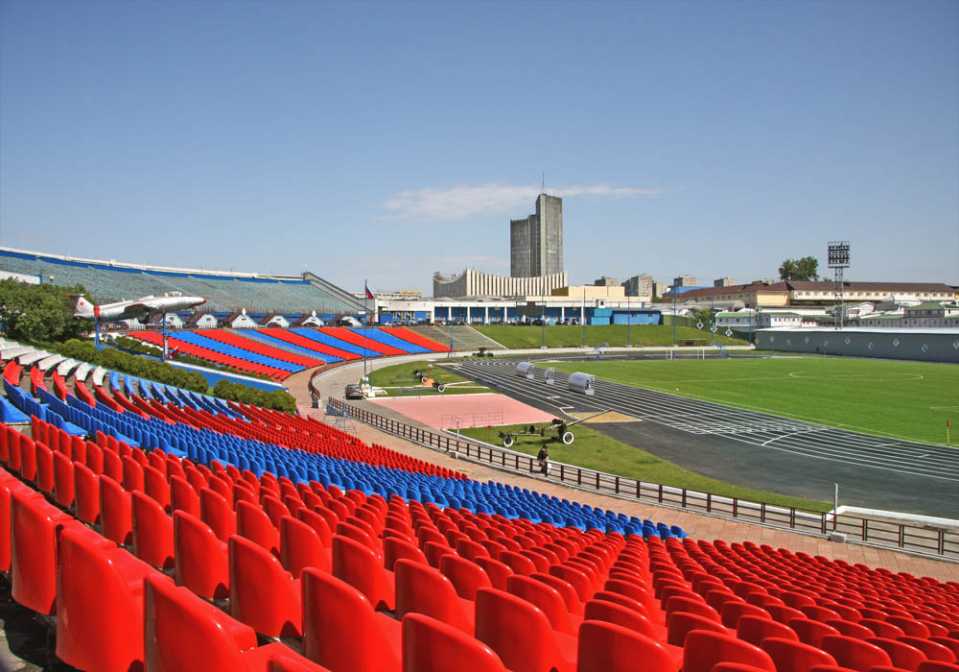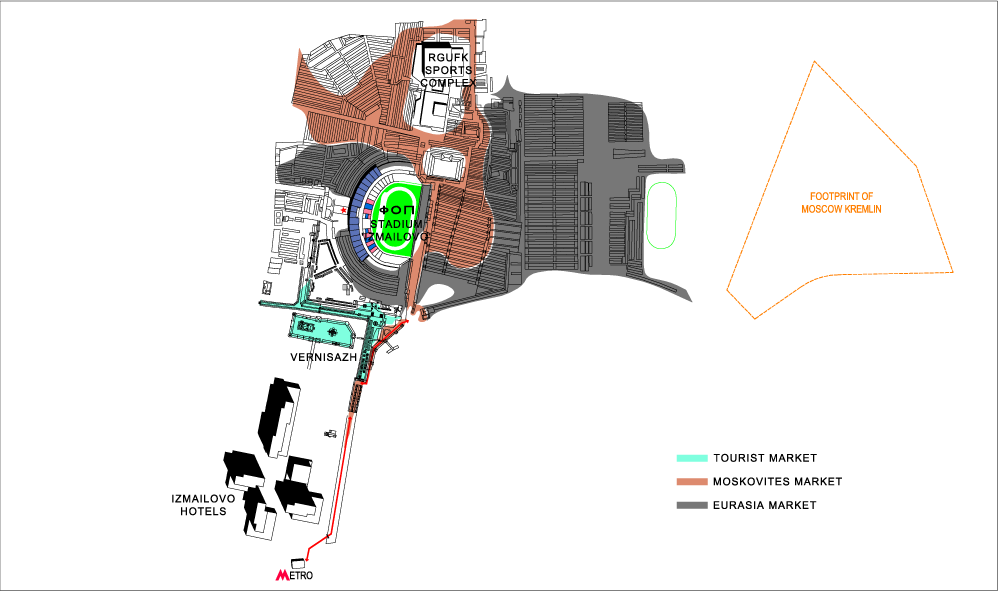
Former Stalinets stadium at the heart of the market


Market porters, waiting next to the entrance to the bunker museum

Rows of stacked containers surrounding the stadium

‘Purpose-built’ Eurasian market, with rows of stacked containers and Perspex-domed aisles, covering approx. 300,000 sqm.


Part of Vernisazh, leading to the Eurasian market

Rebuilt mock Kremlin, part of the tourist market Vernisazh

Moscow Izmailovo: Visiting Stalin
The market’s ‘owners’ are among Russia’s new millionaires, while at the lower end of the new market-economy scale, there are thousands of migrants from Tajikistan, Uzbekistan, China and an extended Southeast Asia, who have come to seek work at the market as stall-minders, carriers and tea-sellers seven days a week. They sleep in the metal storage containers (above the stalls or on the periphery of the market) or in the cellars of the stadium. In this state of modern slavery, they are not only at the mercy of exploitative employers, but also of arbitrary police behaviour and gangs of young thugs. As a result, many of them never dare to go more than a few hundred meters from the market.
In September 2006, one month after a bombing which killed thirteen people and left fifty-three badly wounded, the vice-speaker of Moscow City Council announced that the market would be closing at the end of 2006. A few weeks later, the head of the Department of the Consumer Market of Moscow announced that most of the trading places on the site of the Russian State University of Physical Education (RGUFK) would be taken down by 1 July 2007, and the remainder by the end of 2007. This, it was said, would allow the site to be returned to its proper use, as a space where people could devote themselves to physical culture. But how is it possible to determine the ‘proper’ use of a space, especially in an age of global restructuring? Does its use as a venue for sports events really do justice to the original plans? Or isn’t it simply a by-product, a parasitical use of its potential?
During the XXII Olympic Summer Games in 1980, the RGUFK site served as one of the locations of the Moscow Games. For the weight-lifting events, a new indoor arena, the Izmailovo Sports Palace, was erected. At the southern end of the site, next to Izmailovo Park underground station, the Olympic village was constructed in the form of a four-tower hotel complex with 8,000 beds. The stadium itself, which stands in the middle of the grounds, was built during the 1930s. It is a fragment of the envisaged ‘Central Stadium of the Soviet Union’ planned by Stalin to accommodate 120,000 spectators. Never completed, it also served to camouflage the ‘Reserve Command Centre of the Supreme Commander-in-Chief of the Red Army, I.V. Stalin’.
read more...
read more...
read more...
read more...
read more...
read more...
read more...
read more...
read more...
read more...
read more...
read more...
read more...
read more...